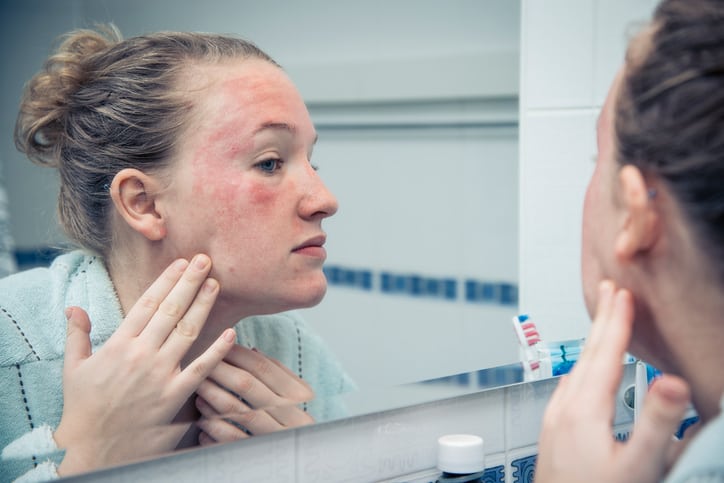Ask us to describe our perfect summer day and we’ll tell you that there’s nothing better than hanging out on the beach, sipping a delicious frozen margarita. But we just caught wind that our favorite summer beverage may put us at risk for a skin rash colloquially called “margarita dermatitis,” and wait, should we be worried?
According to a 2015 writeup on the Baylor College of Medicine’s website, margarita dermatitis — or phytophotodermatitis, as it’s known amongst medical professionals — happens when a certain plant compound comes in contact with the skin and makes that skin patch light-sensitive. This “photosensitizing compound” is found in citrus fruits (like that lime in your margarita, hence the rash’s nickname), celery, and parsley.
When the affected skin comes into contact with the sun, “the reaction is phototoxic, creating a brown, purplish discoloration that is very alarming to people,” said dermatologist Dr. Meghan O’Brien in an interview with Shape.com.
If margarita dermatitis is identified within 24 to 48 hours of it popping up, topical steroids can be applied to help the rash subside. Otherwise, margarita dermatitis will fade on its own within a few weeks to a few months. Oral antihistamines and cool compresses can also speed up the healing process.
The best way to prevent margarita dermatitis is by being aware of the ingredients you’re consuming while out in the sun.
Of course, the rash can be caused by numerous beverages and foods that contain citrus, celery, or parsley, and people may even break out if they come in contact with photosensitizing compounds found in non-edible plants like Queen Anne’s Lace.
Perhaps we’ll wait until the sun goes down to enjoy those margaritas and stick to rosé during the day.

Keep your sunscreen handy and reapply as often as possible to prevent sun-related skin issues such as margarita dermatitis. If you’re handling foods and plants with photosensitizing compounds, wash your hands regularly and then reapply your sunscreen.






